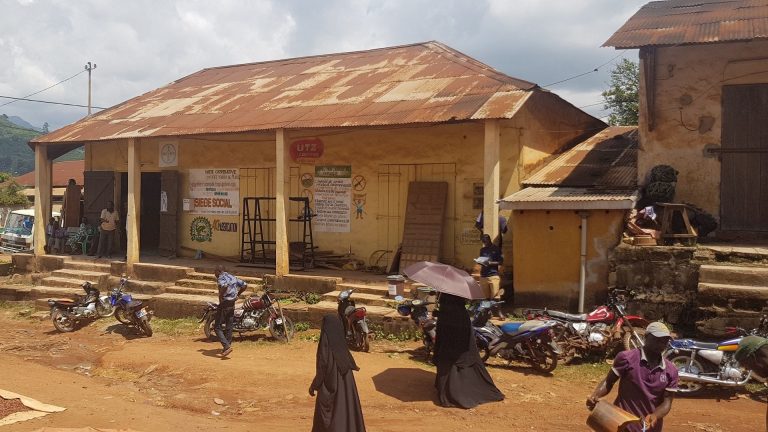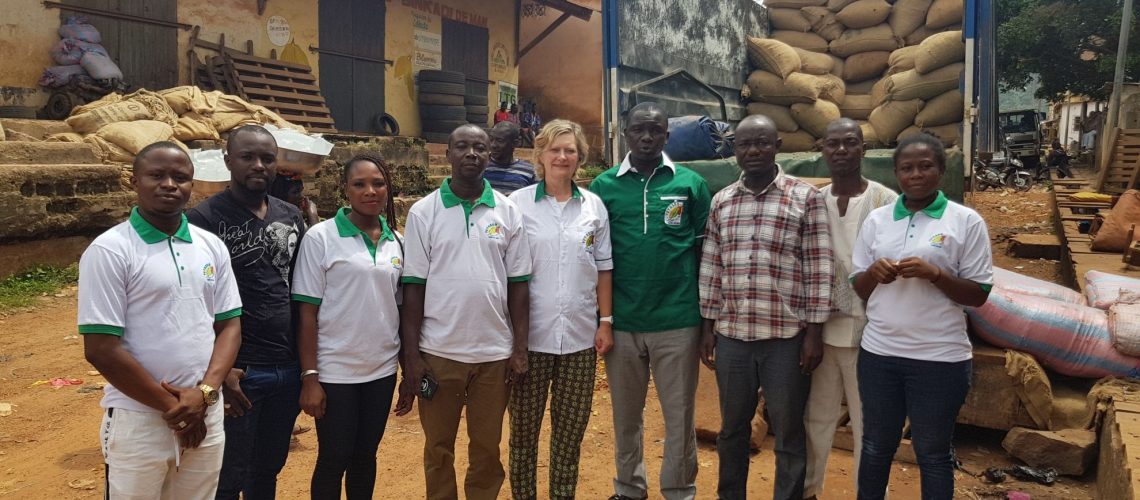Enabel’s Trade for Development Centre supports fair and sustainable trade. Among other things, it coaches producer cooperatives and Business support organisations (BSO’s) in business management, finance and marketing.
Over the last 3 years, 8 BSO’s and 27 cooperatives, mainly in the coffee and in the cocoa sector, have received TDC’s full coaching track.
The professionalisation of cooperatives makes it possible to improve their services to members, find more outlets for their products, and as a result improve producers’ income. By coaching BSOs, who on their turn support cooperatives, the TDC multiplies the impact of its work.
Fairtrade certification
The cooperatives that receive TDC’s support are mostly Fairtrade certified. Several Fairtrade criteria relate to the decent work agenda (labour rights, fair treatment, occupational health and safety, freedom of association and a Fairtrade minimum price which covers producers’ average costs of production and allows them access to their product markets.).
In the cocoa sector, the Fairtrade certification has set a Living Income Reference Price and it is developing initiatives to move towards this price, such as diversifying crops, increasing productivity, and advocating for the payment of a fair price by the chocolate industry.
The living income gap
The TDC has also started to support cooperatives in calculating the living income gap in producers’ households. For the Yeyasso cooperative in Ivory Coast, this calculation makes it possible to analyse the characteristics of households earning more than the living income (small household size of 3 to 4 people ; surface under cultivation of almost 5 ha in total, including cocoa surface of 2 ha ; yield of more than 600 kg/ha, agricultural diversification…) and of those below the extreme poverty line (household size of 7 or more persons ; surface under cultivation of max 3 ha in total, of which one cocoa area <1 ha ; yield of less than 600 kg/ha, dependance on cocoa making them more vulnerable…).
Thanks to this living income gap exercise, cooperatives have a better idea of their members’ living conditions and their incomes, and they will be able to develop specific support, targeted diversification programmes with the help of different partners: importers, chocolate makers (who always have to pay a higher price for cocoa) but also NGOs and development cooperatives.
New TDC programme 2023-2028
Coaching in sustainability, decent work and human rights, as well as subsidies in these areas, will help beneficiary cooperatives prepare for upcoming EU legislation on Human Rights Due Diligence.
In particular, the coaching and financial support will focus on :
- Data collection and communication tools in line with European requirements, which will present good practices in decent work, respect for human rights and sustainability, compatible with the codes of conduct of donor companies.
- The implementation of product traceability, segregation systems and the geolocation of plots.
- The calculation of the living income gap and the definition of an action plan to help reduce this gap: diversification of activities, promotion of financial inclusion of members (creation of VSLA’s), etc.
- When reliable social insurance systems are available: , strengthening the participation of producers in these systems via cooperatives or other social economy enterprises;
- The establishment of structures and policies for the protection of women and vulnerable people (equal pay, maternity leave, policies against violence against women, etc.)
- …
Photo: Enabels’ TDC coach Dominique Derom and Yeyasso members during coaching track
Producer support analysis Yeyasso 21-22

Yeyasso: the small cooperative is now playing in the big league
After two years of coaching with the consultant Dominique Derom, the results are extremely positive for the Yeyasso cooperative. “We have evolved a lot,” confides its director Yeo Yessongbananan Moussa, and, to say the least, it shows!


